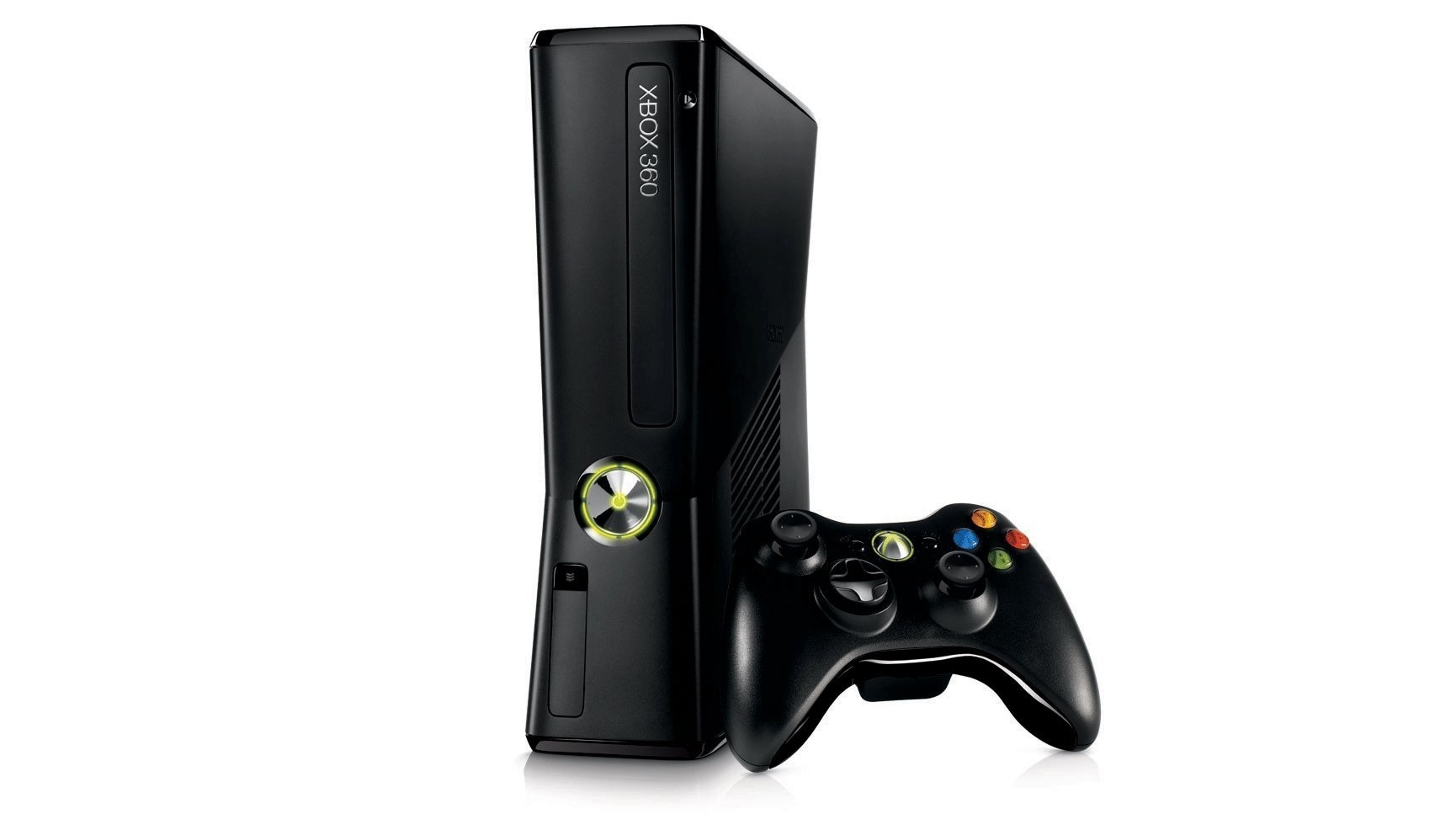Why you can trust TechRadar
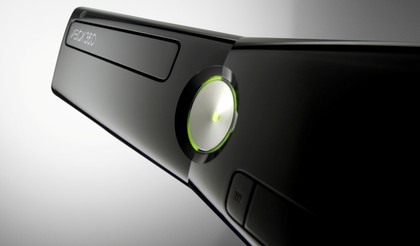
You'd think that the most significant change for the new widely touted 'Xbox 360 Slim' would be its size, but surprisingly, it's not.
At 270mm in height, it's sufficiently shorter than the 310mm tall old 360. But it's only a measly half-a-centimeter slimmer (and fatter than the PS3 Slim) and, would you believe, it's actually slightly deeper than the old 360, too.
Just to make it easier at a glance, here are its dimensions beside the older model, and the PS3 slim just for some extra comparison:
Console: Height/Width/Depth/weight
- Xbox 360 250GB: 270mm x 75mm x 264mm, 2.9kg
- Xbox 360 Elite: 310mm x 80mm x 260mm, 3.5kg
- PS3 Slim: 290mm × 65mm ×290mm, 3.5kg
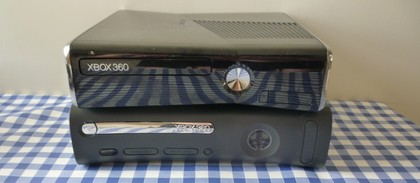
As you can see, its profile is not much 'slim' but more 'light'. It's the lightest of the current-gen consoles by a fair amount, although it's worth noting right now that the PS3 Slim's extra heft also counts for the system's internal power supply, which disappointingly remains external (albeit smaller than the previous power brick) in the new Xbox.
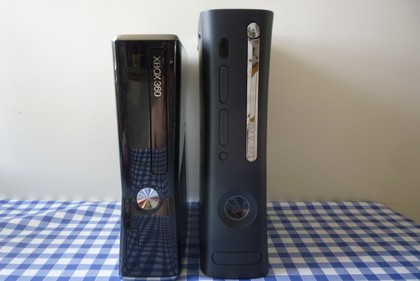
Instead, the more significant changes are in the console's aesthetics and hardware configuration. First of all, that matte plastic has been swapped for a super sexy gloss black.

Where the old console's bubble-like roundness wouldn't look too out of place on the Tomy Toys page of your Argos catalogue, the new console dons sharp edges and harsh lines that almost resemble a stealth fighter (fittingly so given its new quieter operating volume, but more on that later).
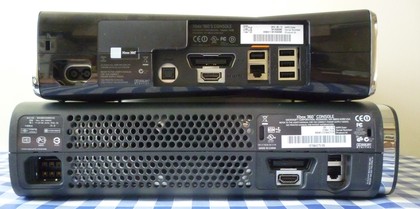
And then there's that grill on the side – a surprisingly large and aggressive opening that's more like something you'd expect from a third-party case mod than the usually reserved standard skin. Consoles usually hide away their tightly-packed insides but the new Xbox flaunts it, giving you a good look at the system's case fan.
Touch-buttons
The power and disc eject buttons are no longer the clunky things they were before. In fact you don't press them at all – they're capacitive touch buttons that respond to no more than a gentle prod.
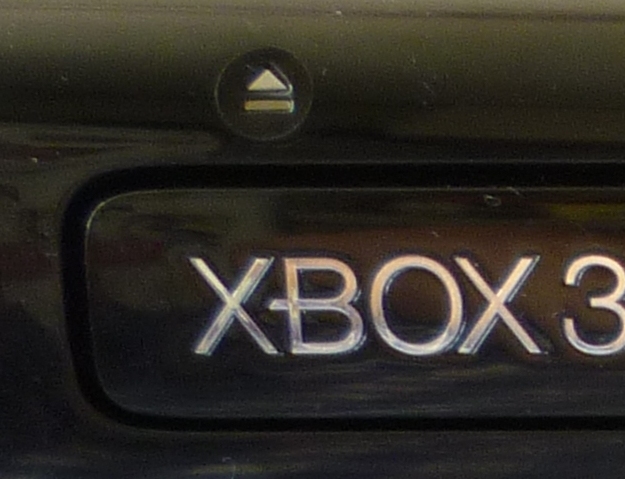
The console makes a funky beep sound to acknowledge your touch, but it's thankfully a more calming chime and not that horrible microwave-style bleep of the PS3.
The console's cleaner appearance is also partly thanks to the omission of the proprietary memory stick ports – MS updated the 360 recently to accept any USB stick as usable memory; a move which pretty much rendered the notoriously more expensive native memory cards redundant anyway.
The two front-loading USB ports remain, tucked neatly way behind a little flap which sits in line with the new bigger and more responsive controller sync button.
The console actually now has five USB ports total instead of the previous three, but those additional ones have been tucked away on the back of the console.
The new disc drive is considerably smoother and quieter than before. Now, we know some of you will, right off the bat, question MS' decision to stick with a disc tray rather than the admittedly sleeker slot-loading drive like on PS3 and Wii. Honestly speaking we would have preferred a slot loader too.
Anyhow, the new drive has none of that Aiwa tape deck-like clunkyness to it. We always wondered what part of the old Xbox could possibly make such a loud 'ker-chunk' sound as the drive closed – that teeth-gritting sound is no longer present here.
We tried moving the console while a disc was spinning inside – something that resulted in a severely scratched disc in the old console. The result? We're certain the result was even worse!
Clearly Microsoft has been unable to find a solution the intense centrifugal forces that bend the disc and make it touch harmful nearby surfaces in the drive. The console does in fact have a sticker on the front which warns against moving it while a disc is spinning. Does this make up for the flaw in our eyes? Not a chance.
On the backside
Flip the console round and you're greeted by a few new ports, too. As we said before, there are three USB ports back here instead of one. You'll now be able to plug a digital optical audio lead directly into the console for your 5.1 surround kits, instead of having to go through external ports on the AV lead.
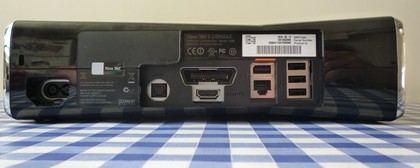
Most interesting though is the 'Aux' port, which is basically where Kinect, Microsoft's new motion-sensing gadget releasing in November, will be plugged in. This port will both operate and power the device. Users of the old console will plug Kinect in via a USB adapter and draw power from a wall socket.
Video is delivered to your TV either via standard HDMI or the proprietary Xbox AV port, which is the same size as before so all your old AV cables will work, which is handy for anyone upgrading from the old console because, ridiculously, the new Xbox comes with no HD video leads whatsoever.
All you get in the box is the standard composite lead, which only does SD – and poorly at that. Everyone else will otherwise have to add the cost of an HDMI lead to their bill before they can see the crisp HD resolutions this machine is capable of.
There's an Ethernet network port back here too, although we'd like to think anyone grabbing the new console will make use of the now built-in Wi-Fi capability.
Finally, Microsoft is no longer bending you over a table with its £70 proprietary Wi-Fi adapter necessary before. Just turn it on and you're wireless right out of the box.
James was part of the TechRadar editorial team for eight years up until 2015 and now works in a senior position for TR's parent company Future. An experienced Content Director with a demonstrated history of working in the media production industry. Skilled in Search Engine Optimization (SEO), E-commerce Optimization, Journalism, Digital Marketing, and Social Media. James can do it all.
